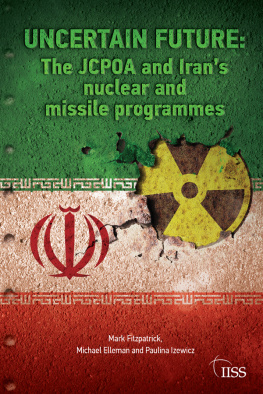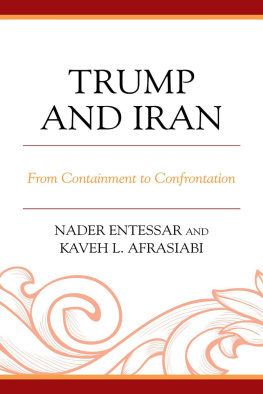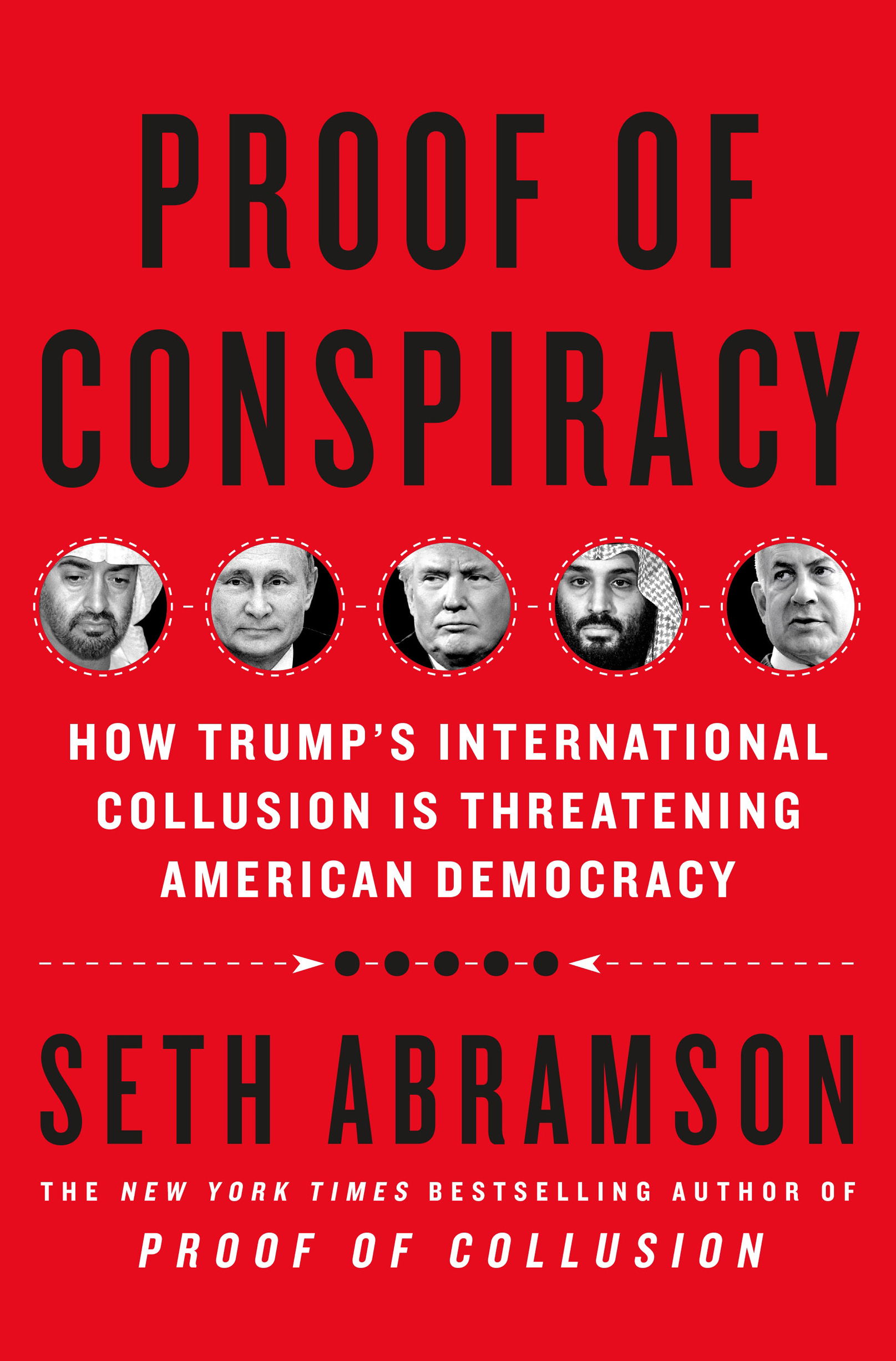In late 2015, after Donald Trump has formally announced his candidacy for president, a geopolitical conspiracy emerges overseas whose key participants are the leaders of Russia, Israel, Saudi Arabia, the United Arab Emirates, Bahrain, and Egypt. These six men decide that Trump is the antidote to their ills: for Russia, U.S. sanctions; for Israel, the lack of Arab allies; for Saudi Arabia, the United Arab Emirates, Bahrain, and Egypt, perceived threats emanating from Iran. The conspirators commit themselves to doing whatever is necessary to ensure that Trump is elected. Trumps presidential campaign is aware of and benefits from this conspiracy both before and after the 2016 election.
On March 19, 2018, British journalist David Hearst, the former chief foreign leader writer for the Guardian, publishes the most important report of his career. Hearst, at one time the Moscow bureau chief at the Guardian, is now editor in chief of his own publishing venture, a London-based Middle East watchdog called the Middle East Eye. In the spring of 2018, he reports the existence of a years-long, continent-spanning conspiracy that will eventually envelop the president of the United States: the Red Sea Conspiracy.1
This book denominates the conspiracy Hearst uncovers as the Red Sea Conspiracy for the simple reason that it is hatched on a yacht in the middle of the Red Sea, a seawater inlet of the Indian Ocean bordered by, among other countries, Saudi Arabia and Egypt.2 One imagines that in his many years as a correspondent and commentator for the Scotsman, the Huffington Post, Al Jazeera (Qatar), Al-Araby Al-Jadeed (England), TRT World (Turkey), Masr Al-Aan (Egypt), and the Guardian, Hearst never thought hed stumble on a story as far-reaching in its implications as the Red Sea Conspiracy.3 But he didand what he found could change the course of history.
This book chronicles the events around the globe that preceded and followed the fall 2015 origin of the conspiracy, with a special focus on how the conspiracy prompted Donald Trump and his aides, allies, and associates to covertly collude with six countries both before and after the 2016 presidential election: Russia, Saudi Arabia, the United Arab Emirates, Israel, Bahrain, and Egypt. Events that began on the Red Sea in 2015 now influence President Trumps foreign policy toward all of these countries, toward other countries not involved in the conspiracy such as Qatar and Iran, and, more broadly, toward Europe, Asia, and the Middle East.
The story of the Red Sea Conspiracy begins with a man named George Nader. As reported by Hearst in the Middle East Eye, toward the end of 2015 Naderthen an adviser to the crown prince of Abu Dhabi, Mohammed bin Zayed al-Nahyan (known as MBZ)convened, with his patrons permission, a summit of some of the Middle Easts most powerful leaders.4 Gathered on a boat in the Red Sea in the fall of 2015 were Mohammed bin Salman (known as MBS), deputy crown prince of Saudi Arabia, who would shortly become the heir apparent to the throne of the Saudi kingdom; MBZ himself, by 2015 the de facto ruler of the United Arab Emirates; Abdel Fattah el-Sisi, the president of Egypt; Prince Salman bin Hamad, the crown prince of Bahrain; and King Abdullah II of Jordan. Nader, the improbable maestro of these rulers clandestine get-together, intended the plan he posed to the men to include the nation of Libya, but no representative from that nation attended the gathering.5
Of the leaders aboard the yacht, twoMBS and MBZare already close. According to a New Yorker interview with Richard A. Clarke, a counterterrorism adviser to Presidents Barack Obama and George W. Bush, MBS and MBZ talk on the phone all day to each other.6 The Red Sea meeting, though technically convened by Nader, is a means for MBZ to advance ambitions that he and MBS have designed together.7
The two Sunni Arab leaders intention, Hearst records, is to remake the Middle East with the covert assistance of a highly placed American politician. They intend to do this by first renaming and reconstituting the membership of the six-member Gulf Cooperation Council (GCC)which in 2015 comprises Saudi Arabia, the United Arab Emirates, Bahrain, Kuwait, Oman, and Qatarwhile reorienting, too, its regional ambitions and global alliances.8 The proposed GCC realignment would evict Kuwait, Oman, and Qatar from the council and replace these three countries with Egypt, Jordan, and Libya, thereby eliminating the entitys historical association with the Persian Gulf and remaking it as, instead, an alliance constituting an elite regional group of six countries, which would supplant [the GCC and] form the nucleus of [a coalition of] pro-U.S. and pro-Israeli states in the Middle East.9 According to two sources briefed on the 2015 Red Sea summit, Nader said this group of states could become a force in the region that the United States government could depend on to counter the influence of Turkey and Iran.10
Prior to 2015, Turkey and Saudi Arabia had intermittently enjoyed strong diplomatic ties, but by the second-to-last year of the Obama administration relations had soured considerably. As explained by Nader Habibi, a Brandeis University economist specializing in the Middle East, the TurkeySaudi Arabia relationship deteriorated in the 90s when the kingdom [Saudi Arabia] took Syrias side in several disputes with [Syrias] neighbor Turkey. These ups and downs in Saudi-Turkish relations were partly a result of Turkeys political instability, including several military coups in the 80s and 90s. Relations tended to improve when Islamist or civilian partieswhich felt close cultural and religious links with Turkeys Muslim neighborswere in power but worsened after the military deposed them.11 This cycle continued unabated up until 2011, when, Habibi writes, the Arab spring uprisings led to the overthrow of governments in Tunisia, Egypt and Libya. As an advocate of political Islam, [Turkish president Recep Tayyip] Erdogan welcomed the revolutions and the new governments they yielded. The Saudi government, on the other hand, saw the revolts as destabilizing.12 Erdogan therefore supported, while Saudi Arabia did not, Mohammed Morsi, the Muslim Brotherhoodlinked politician who took power in Egypt in 2012.13 So it is little surprise that, according to









